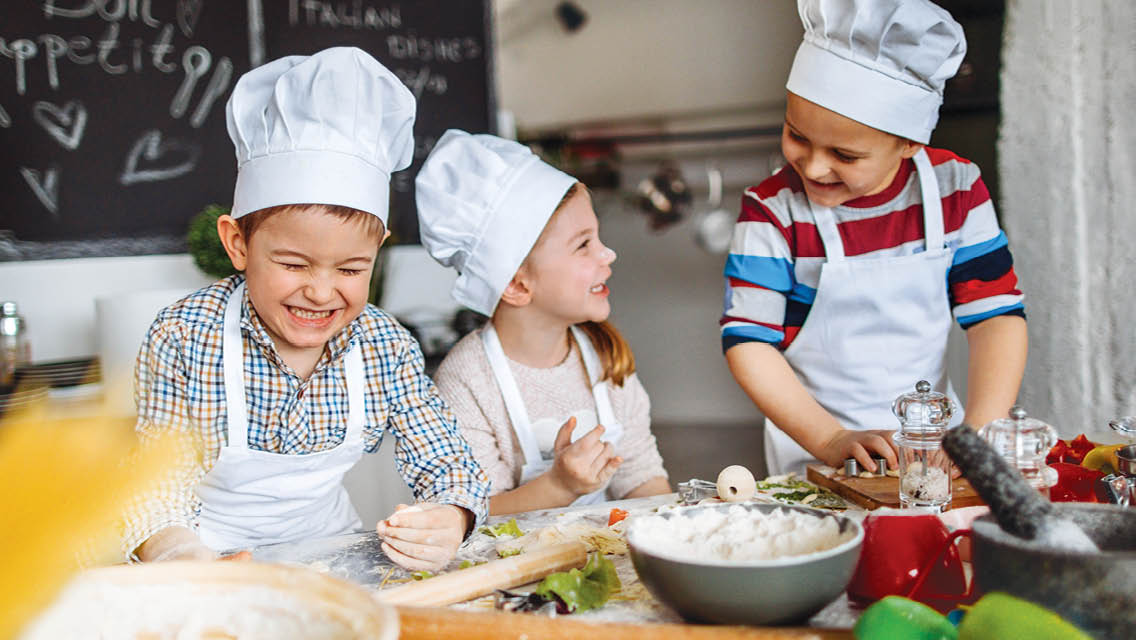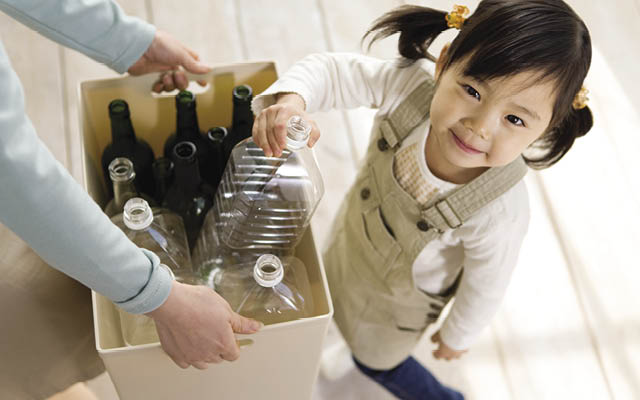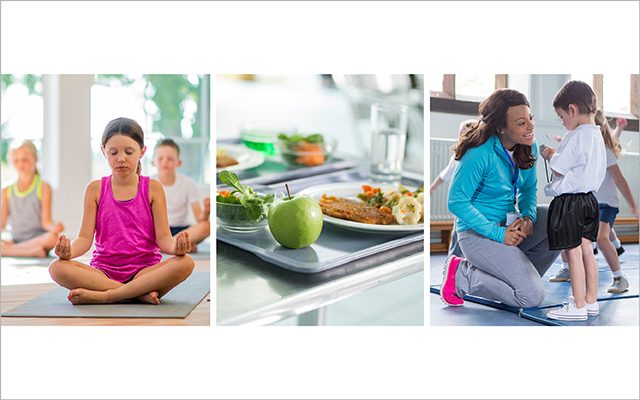Where does pizza come from? Mollie Katzen, the author famous for her Moosewood Cookbook once asked this of a preschool class in Berkeley, Calif. “These were the kids, mostly, of foodie, academic Berkeley types,” Katzen told me. “They huddled, conferred and eventually reached a final answer: the telephone.”
The children’s answer makes perfect sense: These days, after all, far more pizzas start with Mom picking up the telephone than with Mom picking tomatoes. Most food we eat comes so processed, prepared and prepackaged that its key ingredients are all but unrecognizable. And beyond knowing that it came from the store, even well-educated adults may have trouble hazarding more than a guess about their food’s real origins.
Unfortunately, food that comes from the telephone, the drive-thru, the convenience store or the molded polystyrene freezer tray has a far greater chance of being made with things like high-fructose corn syrup, trans fats and chemical additives. And having little or no working knowledge of whole foods and how to cook a meal from scratch dramatically increases a person’s chances of being dependent on less-than-healthy prepared foods for the rest of his or her life.
That said, having your preschooler right by your side as you whip up a pot of healthy minestrone soup is not without its challenges. For one thing, there’s the stove. For another, knives. For a third, your sanity. And so the question presents itself: How can a thoughtful adult raise a child who has a reasonably good understanding of real food?
It’s a question that can prove troublesome even for professional cooks. “I always used to shoo my kids out of the kitchen because that was my workspace, my laboratory,” Katzen acknowledges. “The idea that kids could have their own cooking projects didn’t occur to me until I visited my son’s preschool one day and I saw him cooking with his class and teacher. It was one of those moments of tremendous discovery. At first I felt almost ashamed that I hadn’t done more cooking with him myself – but then it quickly opened a whole new part of my career.”
That new career was a series of cookbooks for children: Pretend Soup and Other Real Recipes: A Cookbook for Preschoolers & Up; Honest Pretzels and 64 Other Amazing Recipes for Cooks Ages 8 & Up; and now Salad People and More Real Recipes: A New Cookbook for Preschoolers & Up. If you’ve never heard of these titles, it suggests that you don’t spend much time on or around jungle gyms. These books are tremendously popular with the younger set and with their parents; Pretend Soup alone has sold nearly 200,000 copies.
 Edible Explorations
Edible Explorations
Cooking successfully with pre-schoolers, Katzen says, requires a clear understanding of one key point: The goal is not to get a meal on the table. The goal is to provide the child in question with a sense of comfort and familiarity around food and a sense of confidence about the whole process of food making. The goal is to establish the foundation for what Katzen calls “food literacy.”
“I’d say there’s a shortage of food literacy in our culture as a whole, not just with children,” Katzen says. “What’s healthful to eat? What’s not? Where does food grow? How is it made?” Few of us have much clarity about these things, Katzen notes, and that’s something she’d like to change.
“It’s been my mission to teach people about basic healthy food, to give people familiarity with how to feed themselves in a healthy way,” she says. “My mission doesn’t change when I’m writing for children. Children have plenty of exposure to sweet things and decorative things, but there’s a big difference between decorating a cupcake and teaching someone what makes soup.” The latter, Katzen says, “gives children a food vocabulary they’ll enjoy for the rest of their lives.”
If the notion of teaching preschoolers soup-making skills still seems counterintuitive to you, it may be reassuring to know that Katzen developed her recipes by testing them extensively with children, and she provides great ideas on what is safe for young kids.
Soup, for instance, doesn’t involve a 3-year-old cutting zucchini like an adult, wielding 6 inches of sharpened steel on a counter a yard off the ground. Rather, it involves sitting at a child-height table and using a strong plastic picnic knife to saw through long strips of zucchini that have already been steamed. That cut zucchini can then be combined with other things, such as peas and precooked alphabet noodles, in a soup bowl. The adult ladles in warm broth, and voilà, your toddler has officially “made soup.”
“Kids are usually very proud to have been trusted with cutting and making, and it helps them feel like they belong to the adult world of procuring and being effective, rather than the traditional child role of consuming or rejecting whatever’s offered,” Katzen says. She notes, however, that while the act of making healthy food generally encourages kids to be more open to eating it, this is not a guaranteed outcome – at least, not right away.
“Half the time,” she says, “little kids will be so excited about having made their first soup that they won’t want to eat it at all. They’ll want to feed it to you, or a teddy bear, or the dog.” But that doesn’t mean the cooking wasn’t successful, she insists.
The most valuable success is a long-term one. It’s the success inherent in giving the child a familiarity with zucchini, a comfort with the essential nature of soup and a growing confidence that food is something he will be able to provide for himself – no telephone required.
Salad People
Assemble some or all of the following ingredients, or improvise your own …
- Cored pear halves, peel optional (fresh and ripe, or canned and drained)
- Cottage cheese or very firm yogurt
- Strips of cheese (cut wide and thin, to be limbs)
- Sliced bananas
- Cantaloupe or honeydew
- Celery sticks (plain or stuffed with nut butter)
- Shredded carrots (in long strands, if possible)
- Sliced strawberries
- Blueberries
- Pitted cherries
- Raisins, dried cranberries
- Orange or tangerine sections
- Cooked angel hair pasta (or a “curly” variety)
- Parsley sprigs
- Peas
- Small spinach leaves
- Sliced black olives
- Sliced radishes
- Sliced cucumbers
- Lettuce, field greens, kale
- Sprouts
- Cherry tomatoes
- Nuts
- Broccoli
- Kiwi
- Edible flowers
Directions
- Then start creating …Place a pear half in the center of each plate, flat side down. Arrange a round scoop of cottage cheese or very firm yogurt above the narrow top of the pear, so that the cheese or yogurt looks like a head and the pear looks like a torso.
- Create arms and legs from strips of cheese, banana spears, melon slices or celery sticks (stuffed or plain).
- Create hair, facial features, hands, feet, buttons, zippers, hats and so forth from remaining ingredients.
- Name your people (or critters), then eat!
Yield: Up to you! Just put out a lot of food. Store the leftovers for the next time, which will likely be soon.
Recipe adapted from Salad People and More Real Recipes: A New Cookbook for Preschoolers & Up by Mollie Katzen (Tricycle Press, 2005).
This article originally appeared as “Kitchen-Smart Kids.”




This Post Has 0 Comments